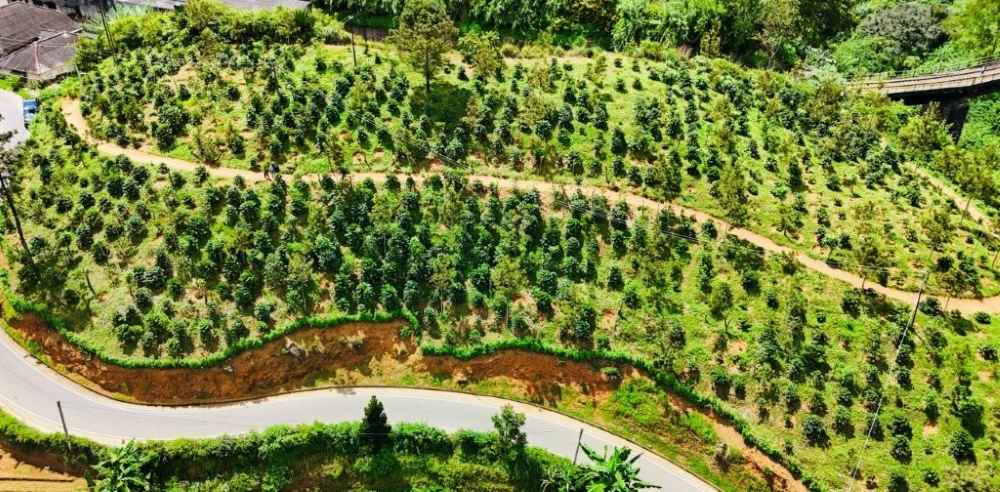
Since its establishment in the colonial era, Sri Lanka’s plantation sector has for the majority of its 200-year history been focused almost exclusively on cultivation of tea, rubber and coconut. Once the island gained its independence, a period of state ownership and management of the plantation industry took hold. Unfortunately, this was an era marked by major systemic inefficiencies, leading to wide-spread declines in profitability, and placing a significant burden on the national economy.
As a result, plantation profitability was often constrained, with limited innovation. Efforts at crop diversification during this time were also generally minimal and fragmented. These efforts only gathered greater momentum in the period following the early 1990’s when the state relinquished control over the majority of the plantation industry.
While JEDB, SLSPC and Elkaduwa Plantations were retained with the state, Regional Plantation Companies were established to serve as the flag bearers of the plantation industry, and bringing with them a new chapter of systemic, modern, market-driven decision making and a broader vision to transform these traditional plantation companies into dynamic, diversified agribusinesses.
The primary aim of privatizing the plantation sector was to eliminate the financial burden caused by loss-making state entities and to improve overall managerial performance. In the decades that followed, the sector demonstrated notable improvements across economic, social, and environmental indicators.
Particularly over the past years, RPCs crossed a small but significant milestone in this journey, with the collective land under diversification expanding for the first time since the establishment of commercial scale crop diversification in Sri Lanka.
This shift towards more high-value crops marks the beginning of a broader transformation in the sector, driven by volatile tea and coconut, rubber prices, increasing climate risks, and the need to tap into lucrative emerging niche markets.
In the decades following privatization, the RPCs began to explore alternate crops to reduce overreliance on traditional produce and buffer against fluctuating global commodity prices.
Oil Palm: The First Diversification Success
Sustainable oil palm was one of the very first commercially viable alternatives that RPCs embraced after privatization. Initial trials were modest, but RPCs have since scaled oil palm cultivation to roughly 11,000 hectares, replacing underperforming rubber blocks—particularly in the wet zone below 300 m.
To build on this success, recent pilot plots have been initiated at Malwatte Valley, Agalawatte and Balangoda under stricter environmental guidelines. These trials are designed to test long-term economic viability while ensuring sustainable land management and ongoing monitoring.
Economically, oil palm has become Sri Lanka’s most profitable plantation crop, yielding about Rs 514,000 per hectare annually—more than triple coconut’s output—and saving the country approximately USD 17 million in foreign exchange spent on edible oil imports each year.
On the social front, oil palm estates offer year-round, higher-wage work in rural communities, and have spurred ancillary businesses in logistics, processing, and maintenance. Environmentally, RPCs have ensured zero deforestation in the expansion of sustainable oil palm for new plantings; plantations sit on marginal lands previously deemed uneconomical for tea or rubber. While proponents note potential soil-moisture conservation benefits, these claims—and broader ecosystem impacts—remain under study.
Despite early public misconceptions and some resistance, oil palm has proven a resounding success for RPCs. With robust regulation, strict land-use guidelines, and these latest pilot projects, oil palm stands poised to remain the linchpin of Sri Lanka’s plantation diversification strategy.
From mass monoculture cultivation to dynamic high‑value crop mixes
The past years have seen a concerted push into cultivating fruits, spices, timber crops, with varying levels of success and maturity across plantations.
Sri Lankan cinnamon is another promising crop that is cultivated across 16 RPCs covering 2,432 hectares, and generating an estimated Rs 573 million in total revenue annually.
Similarly, RPCs are experimenting with a total of 31 crops including many of Sri Lanka’s most famed staple spices and tropical fruits and timber substitutes. The revival of Sri Lankan Coffee cultivation is another notable contributor to this ongoing transformation, with 1,566 hectares now been planted across 9 RPCs, already contributing over Rs 520 million in revenue.
Pepper is grown by 9 RPCs on 1,839 hectares, bringing in Rs 210 million in total income. The increasingly popular durian is also cultivated in 5 RPCs, covering 1,283 hectares and yielding nearly Rs 482 million. Coconut, grown by 8 RPCs on 1,125 hectares, earns approximately Rs 183 million in revenue.
Today, almost all RPCs maintain diversified crop portfolios. From highland vanilla and pepper to low-country avocado, durian, and citrus, the spectrum of agri ventures has expanded. For instance, Kelani Valley Plantations has allocated over 817 hectares for crops like cinnamon, coconut, and coffee. Currently Kelani Valley Plantations (KVPL) has planted 205 Ha of coffee expecting aver 1,300 Yield per ha. Further, another major highlight of KVPL is its ongoing solar projects in their tea & rubber factories.
Elpitiya Plantations generated an impressive Rs. 321.8 million from diversified crops in years 2023/ 2024, with berry cultivation already contributing to revenue. Despite limited land use for non-traditional crops, their contribution to overall profitability remains notable. With crops like coffee, agarwood, avocado, and durian still in early stages, strong future growth is anticipated. High-value crops such as Avocados, known for their rising demand in health-conscious markets, are being trialed in a few estates as well.
Similarly, Kahawatte Plantations (KWPL) has diversified into high-value crops such as cinnamon, coffee, durian, coconut, pepper, macadamia and Pentadesima, anticipating significant returns in the long run, with a current total revenue of Rs. 160,000,000 where KWPL is the foremost runner in cinnamon and the profitability is quite significant.
Breaking Ground with Niche Crops
“This milestone is part of a deliberate effort to de-risk, diversify and reduce reliance on any single crop while capturing premium markets. These efforts hold the key to revitalizing the Sri Lankan plantation industry. It is critical that all stakeholders now engage in constructive dialogue in order to accelerate this long overdue transformation.” Planters’ Association Secretary General Lalith Obeyesekere said.
This strategic shift positions the industry to tap into more lucrative, less saturated segments—signaling a new era for Sri Lanka’s plantation sector.
What sets the recent wave of diversification apart is its primary focus on niche, high-value markets. Vanilla, macadamia, berries, and coffee gaining prominence, while tropical fruits such as rambuttan, durian, and mandarin are being cultivated to actively tap into domestic and export demand. Vanilla which is one of the world’s most expensive spices by weight, is also under early-stage experimentation, driven by high global prices and limited supply. These crops, while still in their infancy within the plantation sector, signal a growing appetite among RPCs to align with global agri-market trends and diversify into premium market segments.
Berry cultivation is beginning to take root, with the growing of strawberries, blueberries, blackberries, and raspberries.
Trials on Pentadesima – commonly known as the African butter tree – are also currently underway. A tropical tree valued for its oil-rich seeds, which are used as a substitute for coca butter, with a wide variety of commercial applications in food preparation, as well as cosmetics and other industrial applications. These early-stage trials reflect a growing interest in testing high-value, climate-resilient alternatives.
Moreover, renewable energy projects are reshaping the operating models of RPCs. Plantation companies are gradually transforming from single-commodity estates to complex agro-enterprises with vertical integration plans that include value-added production, such as cinnamon oil, bottled coconut water, and dried fruit.
The Road Forward
To truly scale these diversification efforts, RPCs need targeted policy support. Cold chain infrastructure—from farm to port—is essential to preserve the quality of perishable goods like berries, durian, and avocado. With the right backing, Sri Lanka’s plantation sector can evolve from mono-crop dependence to a dynamic, resilient agri-export hub. If supported by policy incentives, better research and development, and export facilitation, the agri-business wings of RPCs may well redefine the country’s plantation economy, from legacy-bound tea estates to forward-looking diversified agri-powerhouses.



